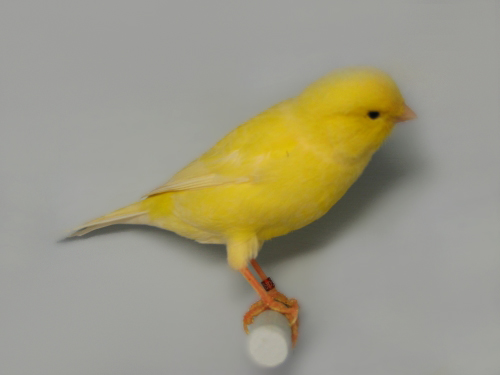


Canary melons pair well with honey, ginger, citrus, cucumbers, herbs such as basil, cilantro, and mint, fennel, cheeses including ricotta, mascarpone, and halloumi, apples, berries, kiwis, and oranges. The melons can also be cooked into jam, used as a filling in baked goods, or blended frozen into granitas, popsicles, and sherbet. In addition to fresh slices, Canary melons can be blended into smoothies, juiced into fruit punches, cocktails, and mocktails, incorporated into chilled soups, or combined with herbs as a flavorful side dish. The flesh can also be cut and displayed on appetizer plates, chopped and added to green and fruit salads, diced into salsa, or sprinkled with citrus juice, salt, or ginger as a tangy snack. The melons can be sliced in half, the seeds discarded, and consumed straight, out of hand. The specialty fruits contain a less musky scent than other muskmelon varieties, allowing the flesh not to overpower a dish and complement a wide variety of ingredients. The melons are also a good source of vitamin A to maintain healthy organ functioning, potassium to balance fluid levels within the body and contain lower amounts of manganese, iron, calcium, and phosphorus.Ĭanary melons have a complex, sweet and tangy flavor well suited for chilled, fresh preparations.
JAUNE CANARI FREE
Canary melons lack the musky aroma commonly associated with muskmelons and are primarily grown worldwide for fresh eating.Ĭanary melons are an excellent source of fiber to regulate the digestive tract and the antioxidant vitamin C to strengthen the immune system, reduce inflammation, and protect the cells against environmental toxins known as free radicals. The melons are known by several names, including Spanish melon, Juan Canary, Jaune des Canaries, Amarillo melon, Spanish Melon, and San Juan Canary Melon. Canary mels are also named after the canary bird, as the rind matches the bird’s signature, bright yellow coloring. Canary melons are highly favored for their juicy, sweet flesh and are a type of winter melon, meaning their hard rind allows the melon to have a long post-vine shelf-life, stored for extended periods, and shipped to markets worldwide. The specialty melons grow on vines that can reach three meters in length, and the fruits tend to mature in approximately 80 to 90 days. The variety is grown in both hemispheres and can be exported long distances, allowing the melons to appear sporadically throughout the year in various fresh markets.Ĭanary melons, botanically classified as Cucumis melo, are a sweet variety of muskmelon belonging to the Cucurbitaceae family. The melons also contain around 13.9 Brix, a measurement of the sugar content within the flesh, creating a distinctly mild, sweet, and tangy flavor.Ĭanary melons are generally available in the summer through mid-fall. Canary melons should feel heavy for their size when ripe and emit a subtle, tropical aroma with pineapple and banana nuances. The seeds are very hard and are typically discarded before consumption. The flesh also contains a central cavity filled with many tan oval seeds encased in stringy white fibers. Underneath the rind, the flesh ranges in color from ivory to white with pale green hues and is juicy, soft, tender, and succulent. As the melon ripens, the flesh will develop a slightly waxy texture, the surface may become lightly corrugated, and the coloring will deepen into a vibrant bright yellow with orange undertones. The melon’s rind is tough, hard, thick, and semi-smooth, sometimes speckled with brown markings.

Canary melons are small to medium fruits, averaging 10 to 13 centimeters in diameter, and have an elongated, oval shape, slightly tapering on both ends, similar in appearance to an American football.


 0 kommentar(er)
0 kommentar(er)
